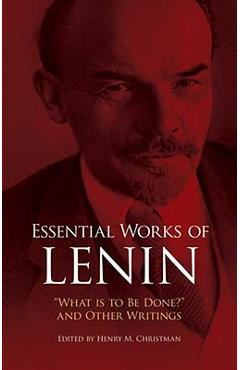What Is to Be Done? - Nikolai Chernyshevsky

Detalii What Is to Be Done?
libris.ro
183.53 Lei
203.92 Lei
Fiction
Nikolai Chernyshevsky
What Is to Be Done? - Disponibil la libris.ro
Pe YEO găsești What Is to Be Done? de la Nikolai Chernyshevsky, în categoria Fiction.
Indiferent de nevoile tale, What Is to Be Done? - Nikolai Chernyshevsky din categoria Fiction îți poate aduce un echilibru perfect între calitate și preț, cu avantaje practice și moderne.
Preț: 183.53 Lei
Caracteristicile produsului What Is to Be Done?
- Brand: Nikolai Chernyshevsky
- Categoria: Fiction
- Magazin: libris.ro
- Ultima actualizare: 28-10-2025 01:22:05
Comandă What Is to Be Done? Online, Simplu și Rapid
Prin intermediul platformei YEO, poți comanda What Is to Be Done? de la libris.ro rapid și în siguranță. Bucură-te de o experiență de cumpărături online optimizată și descoperă cele mai bune oferte actualizate constant.
Descriere magazin:
Almost from the moment of its publication in 1863, Nikolai Chernyshevsky\'s novel, What Is to Be Done? , had a profound impact on the course of Russian literature and politics. The idealized image it offered of dedicated and self-sacrificing intellectuals transforming society by means of scientific knowledge served as a model of inspiration for Russia\'s revolutionary intelligentsia. On the one hand, the novel\'s condemnation of moderate reform helped to bring about the irrevocable break between radical intellectuals and liberal reformers; on the other, Chernyshevsky\'s socialist vision polarized conservatives\' opposition to institutional reform. Lenin himself called Chernyshevsky the greatest and most talented representative of socialism before Marx; and the controversy surrounding What Is to Be Done? exacerbated the conflicts that eventually led to the Russian Revolution. Michael R. Katz\'s readable and compelling translation is now the definitive unabridged English-language version, brilliantly capturing the extraordinary qualities of the original. William G. Wagner has provided full annotations to Chernyshevsky\'s allusions and references and to the, sources of his ideas, and has appended a critical bibliography. An introduction by Katz and Wagner places the novel in the context of nineteenth-century Russian social, political, and intellectual history and literature, and explores its importance for several generations of Russian radicals.

Produse asemănătoare

Essential Works of Lenin: what Is to Be Done? and Other Writings - Vladimir Ilyich Lenin
![]() libris.ro
libris.ro
Actualizat in 28/10/2025
128.06 Lei

Life Is My Guru: A Practical Guide to Understanding What Your Life Experiences Are Trying to Teach You - Bobby Price
![]() libris.ro
libris.ro
Actualizat in 28/10/2025
133.87 Lei

If This Isn\'t Nice, What Is? (Even More) Expanded Third Edition: The Graduation Speeches and Other Words to Live by - Kurt Vonnegut
![]() libris.ro
libris.ro
Actualizat in 28/10/2025
111.32 Lei

When Violence Is the Answer: Learning How to Do What It Takes When Your Life Is at Stake - Tim Larkin
![]() libris.ro
libris.ro
Actualizat in 28/10/2025
111.55 Lei

A Field Guide to Tequila: What It Is, Where It\'s From, and How to Taste It - Clayton J. Szczech
![]() libris.ro
libris.ro
Actualizat in 28/10/2025
139.5 Lei
